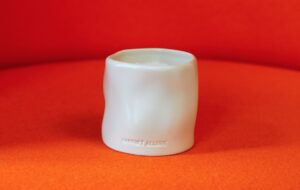

Words Mark Rappolt
Everyone knows that the Turner Prize is the British art world’s big annual jamboree. The winner gets a cheque for £25,000 and, perhaps more importantly, contemporary art gets noticed and discussed, attracting more tabloid inches and television minutes than at any other time of the year. So what’s art shouting about in 2007? Well, curiously, it’s architecture, in the form of the four shortlisted artists’ explorations of its social, psychological and phenomenological significance.
Some years ago, Mark Wallinger dressed up in a saggy bear suit and spent the night wandering, slumping, scratching and sniffing around Mies van der Rohe’s iconic and empty Neue Nationalgalerie in Berlin. And he made a video of it. The performance indicated that we might at times think of the gallery as zoo, prison, cage, torture device and something alienated from reality. The bear, which is the symbol of Berlin, articulated themes of alienation, disguise, nature vs culture and reality vs unreality. The video, Sleeper (2004-5) (yes, there’s a reference to Cold War politics in there too), goes on for more than two hours, so there’s plenty of time for an overly attentive viewer to extract as much oblique significance in the work as is humanly possible.
But does anyone really “get” all this by looking at the work without the aid of notes or guides? Of course not, but perhaps that makes all this closer to architecture still. After all, you could look at all those preposterously big books that architects publish as an aggravated equivalent of the pamphlets that accompany this sort of exhibition.
By comparison to Wallinger’s work, Nathan Coley’s efforts appear clumsy and brutal. And that’s saying something, given that Wallinger offers little more than a building confronted by a man in a bear suit who appears to have taken Mies’ famous dictum – “less is more” – rather too much to heart. “Rooted in urban and social practice, and underpinned by detailed research, Coley’s art explores the ways in which systems of social and political value can be inferred through the built environment,” the Tate’s exhibition guide tells us.
What all that actually boils down to is two blocks of wood at the entrance and exit of the artist’s show space that look like they’re designed to trip people up, but actually (on reference, again, to the exhibition guide) turn out to be markers of a “thresholdspace”; an illuminated fairground-style sign reading THERE WILL BE NO MIRACLES HERE (which, presumably, is an ironic comment on the viewer’s expectations on entering a Turner Prize exhibition, and a demonstration of the artist’s power/control over the space); some doctored photographs of confessional boxes; and a very British-looking model house with “hope” and “glory” written on the sides.
Perhaps the woodblocks might have worked had the space been truly empty, but here they just seem silly, meaningless and, well, a little wooden. The confessional boxes and model house seem like overwrought attempts to highlight a symbolism that Coley’s subject matter already expresses.
The two other entrants approach architecture from opposite poles but with rather similar effects. Mike Nelson offers psychological space, while Zarina Bhimji extracts poetry from an existing place. Nelson’s installation, Amnesiac Shrine (2007), comes with a story about its being the work of a biker gang composed of Gulf War veterans.
It consists of a series of corridors created by four white cubes with peepholes smashed into them, so that we can peer in on a nocturnal desert landscape populated by what seem like endless (thanks to the fact that these interiors are mirrored) tiny lights. Once again, it is up to the viewer to invent a narrative based on the clues that the artist has left.
Bhimji’s main work, on the other hand, is Waiting (2007), a film documenting a sisal factory (in which the fibres of an agave plant are turned into rope). It’s a dusty, ghostly white place and the film, which focuses largely on details rather than providing a complete picture, tends to depict it as the site of rather unpleasant goings-on.
We all know that architects all secretly think they’re artists anyway – maybe not so secretly in the case of someone like Frank Gehry, who’s always warbling on about the fact that his buildings are sculptures. And with Wallinger and co exploring the psychology of built or imagined space (that’s the “architecture” you don’t see rather than the stuff you do), you can’t help thinking that Bernard Tschumi, Daniel Libeskind or Rem Koolhaas would feel right at home at a dinner party with them. They’d be talking the same language, engaging in similar psychoanalyses of space and generally having a good time.
Does that mean that the line that separates architecture and art is being scraped away? Architects, don’t worry. None of these people is going to steal the Stirling Prize. If these artists ever tried to construct a building they’d be relying on their viewers rather than columns and trusses to hold the whole thing up.
Turner Prize 2007, Tate Liverpool, 2 October – 6 January



















